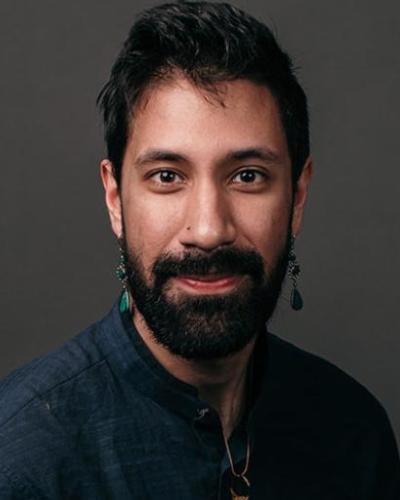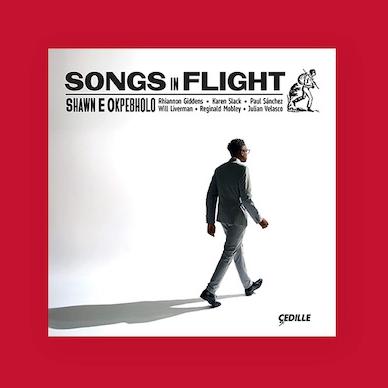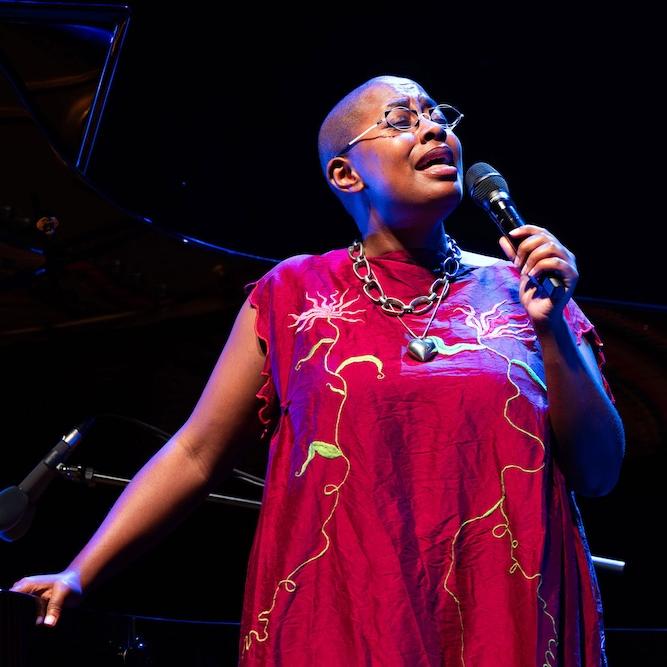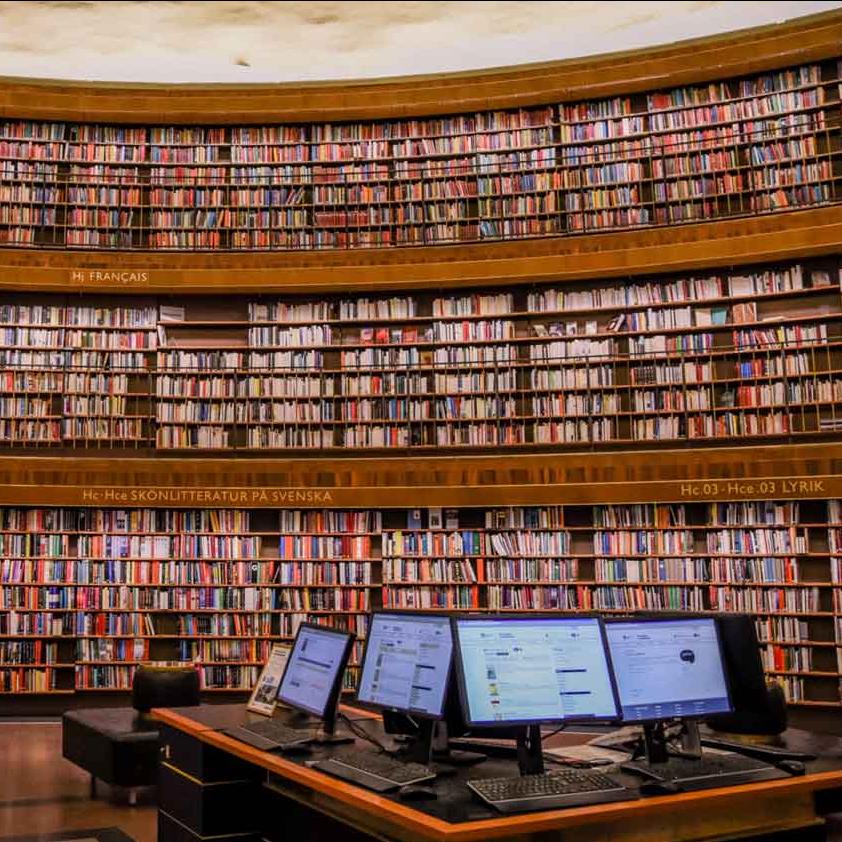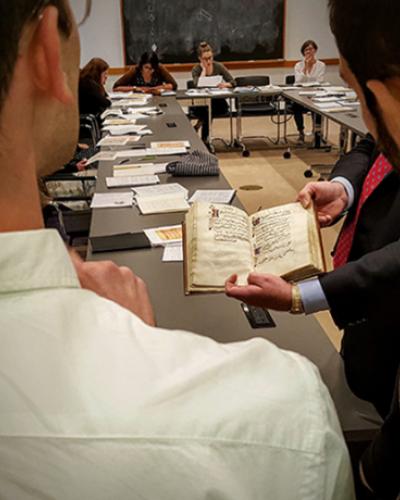Twenty students from across the United States and Canada gathered in the Reading Room of the Beinecke Rare Book & Manuscript Library at Yale University for four and a half days this past August. The program aimed to give students the tools they need to analyze and perform medieval music using various notational systems. Students covered a wide range of material, including neumes and various early print sources.
The program was led by Cornell Associate Professor Andrew Hicks and Yale Assistant Professor Anna Zayaruznaya. Andrew Hicks is cross-appointed in both the Music department and the Medieval Studies program at Cornell, in addition to being the resident Medieval Latinist for the Medieval Studies program. His book, Composing the World: Harmony in the Medieval Platonic Cosmos, was published this year by Oxford University Press. More recently, Hicks started work on a new book project, The Broken Harp: Musical Metaphor in Classical Persian Literature, for which he was awarded the Berlin Prize from the American Academy in Berlin.
During a visit at Yale, Hicks and Zayaruznaya discussed a lack of undergraduate and graduate level seminars on historical notation, and, inspired by other summer intensive-style programs, came up with this program as a way to remedy the situation. Their goal was to create a program that taught the essential skills of navigating notation that is driven by extremely “opaque” concepts.
The course started with some of the earliest notation, which is not pitch or rhythmically specific, and explored the evolution of the various graphical conventions that came about over the centuries. They worked through all of this material over only four days, but according to Hicks, by day two students were already sight-singing medieval songs directly from the original manuscripts.
Rather than simply giving manuscripts to participants and having them transcribe the songs in today’s notation to get a semblance of what they would sound like, Hicks and Zayaruznaya made the decision to teach the various notational systems using singing. “What we really try to do is to get the students singing from that notation immediately, and what that does is it highlights the fact that this is not merely a logical system to be translated… but in fact [the notation] conveys the information for [musical] realization.”
“What we try to teach and to foster is a different kind of musical literacy than what they had before, and to get them to approach medieval notation from the perspective of an expressive medium, rather than as a rigid set of rules and laws that have to be worked through logically on pen and paper.”
Students were sent readings to complete before the seminar so that, upon arrival, all participants would be on same page. Once students arrived at Yale, Hicks and Zayaruznaya worked closely with them as they examined original documents up close, gleaning from the manuscripts information about the performers, the circumstances of composition, and what notation says about the “musical grammar” in each society. Hicks stressed the importance of thinking of notation “as a tool, an academic and intellectual tool, for understanding all the body of text and writing and thought and argument that surround medieval and renaissance music.”
The sessions were split between lectures and hands-on activities; during one activity, participants had the opportunity to sight-sing directly from the Mellon Chansonnier, a manuscript dating to the mid-1470s which contains a collection of beautifully calligraphed medieval songs. “To see the students singing from an original fifteenth century songbook, one-to-a-part, in the round… was a really special moment,” said Hicks.

